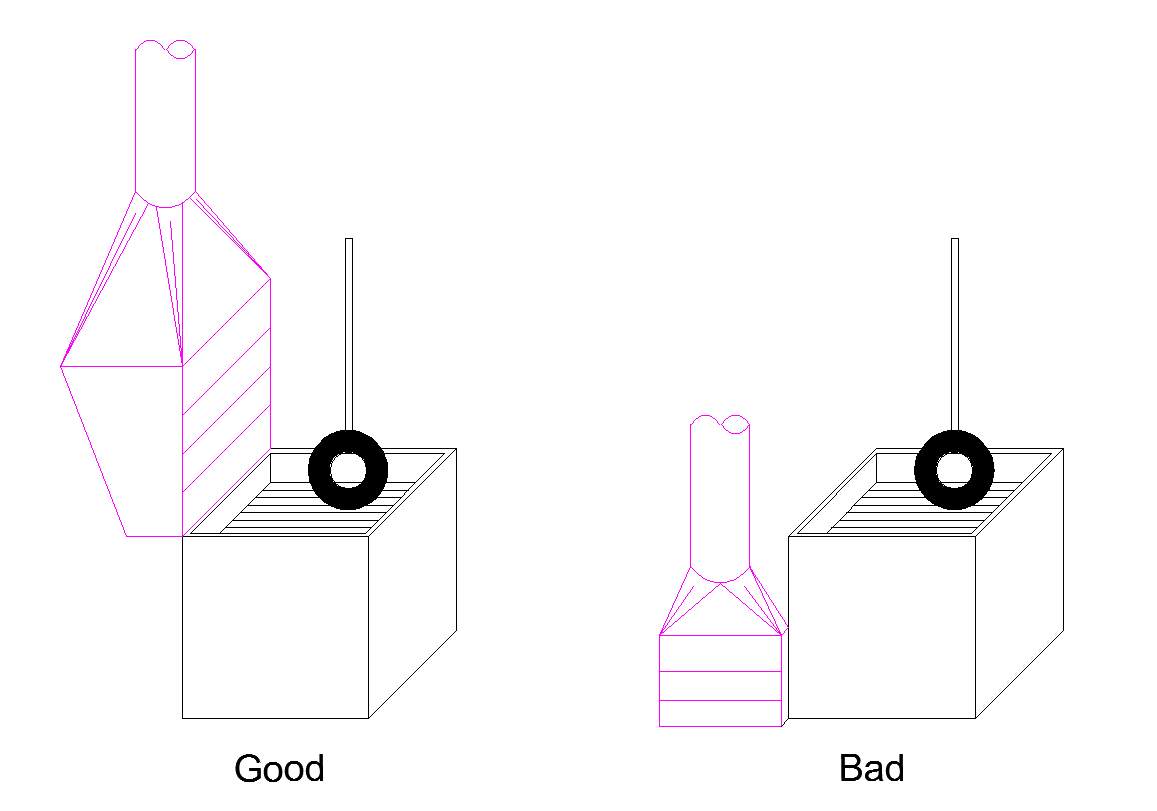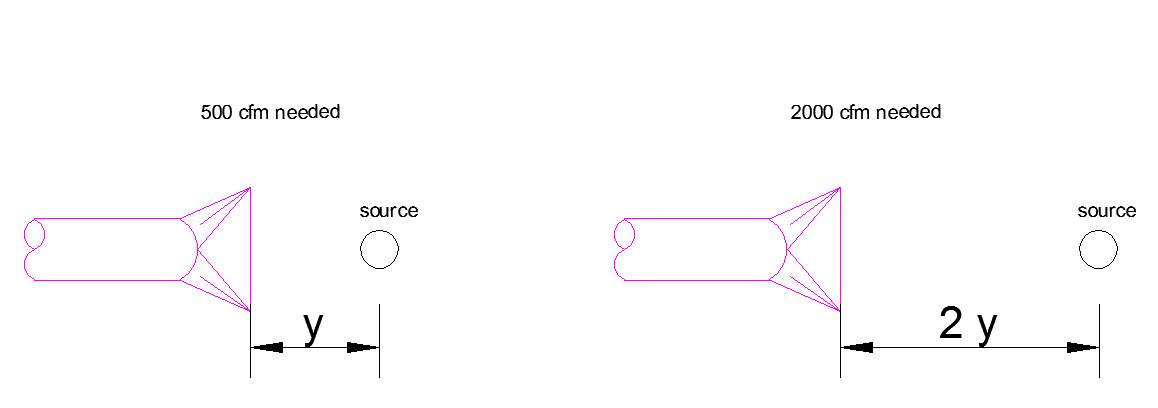| |
 |
|
|
|
INDUSTRIAL VENTILATION DUST COLLECTION SYSTEM DESIGN
PAINT DIP -SOLVENT VAPOURS
PAINT
DIP -EXHAUST HOOD LOCATION |
 |
| Solvent vapors in
health hazard concentrations are not always heavier than
air. |
| Exhaust from floor
only gives fire proteciton only ; |
Ex:
|
|
Denisty of
air : |
1 |
Denisty of
%100 amyl acetate vapor : |
4,49 |
Density of
lowest explosive mixture : |
1,038 |
Density of
T.L.V (*)mixture : |
1.0003 |
| |
|
* T.L.V The threshold
limit value (TLV) of a chemical substance is believed to
be a level to which a worker can be exposed day after day
for a working lifetime without adverse effects. Strictly
speaking, TLV is a reserved term of the American Conference
of Governmental Industrial Hygienists (ACGIH).
|
 |
| |
Place
hood as close as to the source.Required volume varies with
square of distance.Required exhaust air volume varies with
square of distance
|
| Where ; |
| Capture Velocity |
V |
fpm |
Air velocity at any point in
front of the hood or at the hood opening ,neccesary to capture
the contaminated air at that poinby causing it to flow into
the hood. |
| |
|
|
|
| Face Velocity |
Vf |
fpm |
Air velocity at the hood opening |
| |
|
|
|
| Slot Velocity |
Vs |
fpm |
Air velocity through the openings in a slot
type hood |
| |
|
|
|
| Plenum Velocity |
Vp |
fpm |
Air velocity in the plenum |
| |
|
|
|
| Duct Velocity |
Vd |
fpm |
Air velocity through the duct after hood. |
| |
|
|
|
| Transport Velocity |
Vt |
fpm |
Minumum air velocity through the duct required
to move particules in air stream. |
| |
|
|
|
| Dust Distance |
X |
ft |
Distance outward along center axes of hood. |
| |
|
|
|
| Air Flow |
Q |
cfm |
Required minumum air flow to capture dust
particles |
| |
|
|
|
| Area |
A |
ft2 |
Area of hood opening |
| |
|
|
|
| Diameter |
D |
ft |
Diameter of round hoods |
Dust Exhaust
system Hood Entry Losses Table
Back
|
|
|
|
|
|
|

